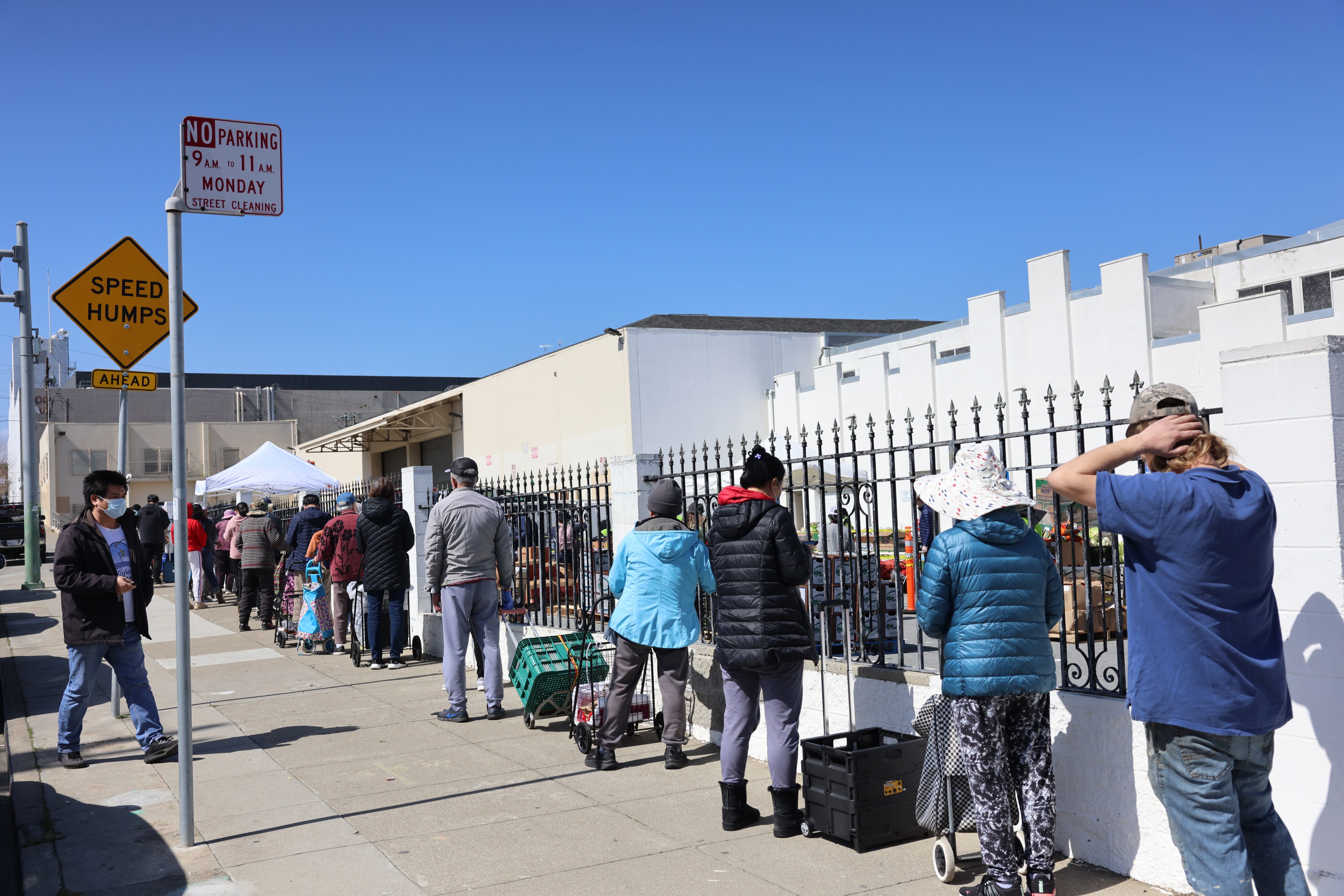Many families in San Francisco don’t know how they’ll be able to eat as a pandemic-era benefits bump comes to an end in April.
The looming food stamp cut arrives at a time of soaring food prices. The poorest families are being hit hardest.
“I’m not sure how I’m going to have enough food for me and my wife,” Wen said in Cantonese through a translator outside a food bank Thursday.
Wen, who asked to be identified only by his first name, relies on CalFresh, California’s food stamps program, but is now scrambling to figure out a plan to keep his pantry stocked as his benefits are set to drop from $223 to $150 for him and his wife from April on.
“It’s definitely affecting how much I have to spend on food nowadays. Everything at the grocery store is going up,” Wen said.
Wen spoke with The Standard as he waited in a 50-person line outside a food pantry operated by the San Francisco-Marin Food Bank outside Cornerstone Baptist Church in the Bayview, which is open from 12 to 4 p.m. every Thursday.
U.S. Department of Agriculture documents show that since November, the pandemic boosts have amounted to more than $500 million a month in additional food stamps coming into low-income Californians’ budgets.
Juan Shan Pan said she received an extra $90 payment on top of her normal CalFresh benefit throughout Covid.
“I’m more observant of what I have to spend. I’ll have to look for sales, especially as food prices go up,” Shan Pan said in Cantonese. “I don’t really know any more food pantries, and I don’t know a lot of English to look for more.”
But food pantries, or food banks, are already stretched thin, according to the San Francisco-Marin Food Bank, which provides food for free through 250 operations across San Francisco and Marin counties.
“We’re already at capacity,” said food bank spokesperson Keely Hopkins. “We’ve seen this continued, steady demand.”
Hopkins said the SF-Marin Food Bank currently serves 56,000 households a week, compared with 32,000 in 2019. The food pantry at the Cornerstone Baptist Church had nearly 900 households signed up to get food on Thursday.
What’s more, the food bank is paying five times more for food than it did before the pandemic, thanks to inflation and increased demand, according to Hopkins.
The California Department of Social Services says it’s warning households of the upcoming decline in aid and directing CalFresh recipients to food banks, which have received additional funding from both the state and federal governments in recent years.
Plans To Eat Less
Hettie Thomas, who is on disability insurance, said that she plans to eat less to cope with the reduced benefit, but doesn’t understand why benefits are being cut back when she needs them most.
“Why should they cut food stamps? Everything’s going up, and they’re cutting us down,” Thomas said.
Mercedes Alonzo, a mother to a 12-year-old child and a 14-month-old baby, said that food stamp cuts amid rising inflation will hit her hard, too.
“If things are so expensive, why are they taking the help away?” Alonzo said.
Others like Xavier Romero said that his benefit has already been cut, with his CalFresh benefits dropping from $238 to $68 in January.
“It buys me milk and eggs, and that’s about it,” Romero said.
To get by, he recently started working for DoorDash, on top of his current job at UPS, netting an extra $100 a week, but now he’s worried his extra earnings will disqualify him from CalFresh. He’ll be unable to draw from it if he earns more than $2,266 a month.
“I make too much, but still not enough to survive,” Romero said.
The California Department of Social Services, which runs CalFresh, was contacted for further comment.
CalMatters contributed to this report.
